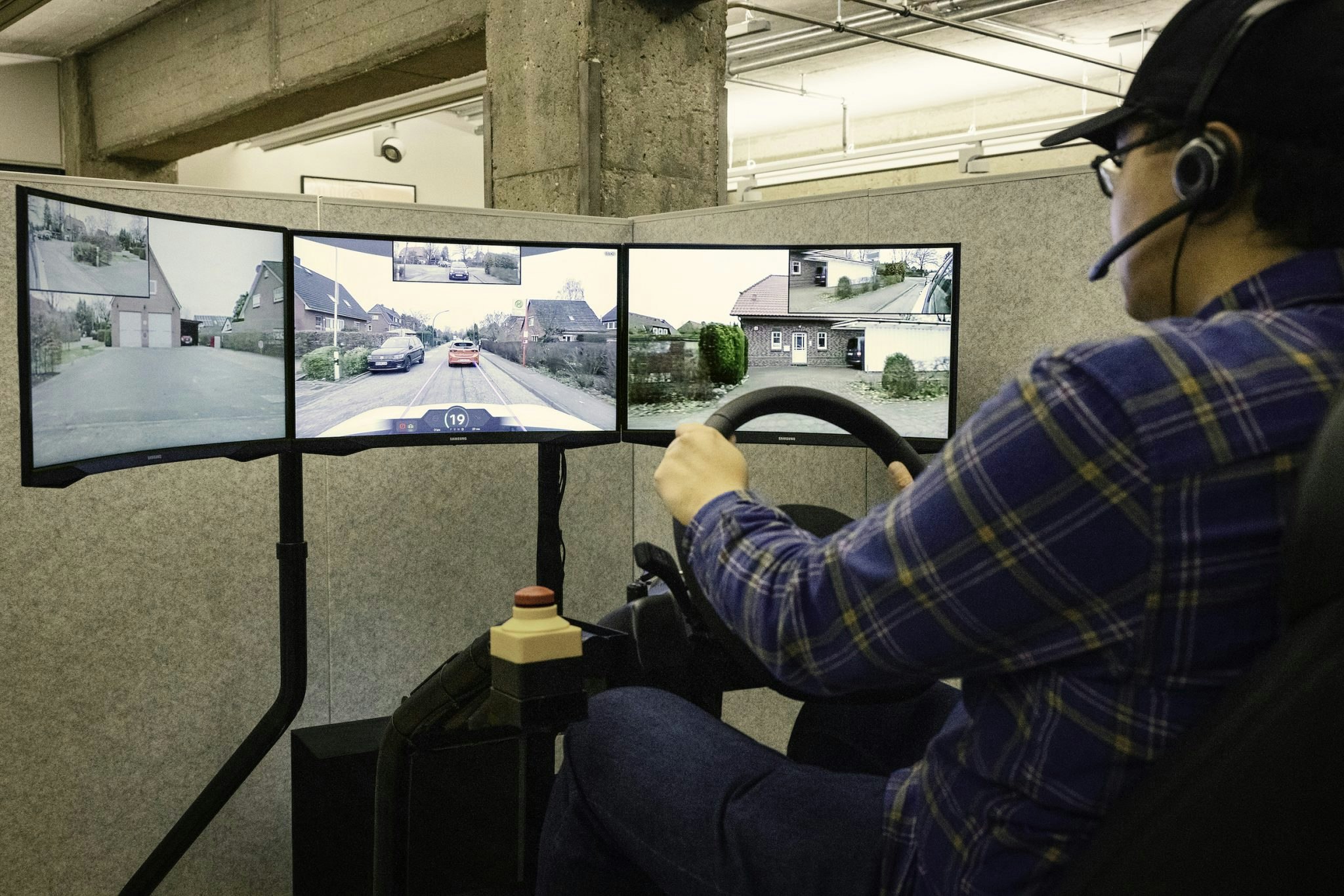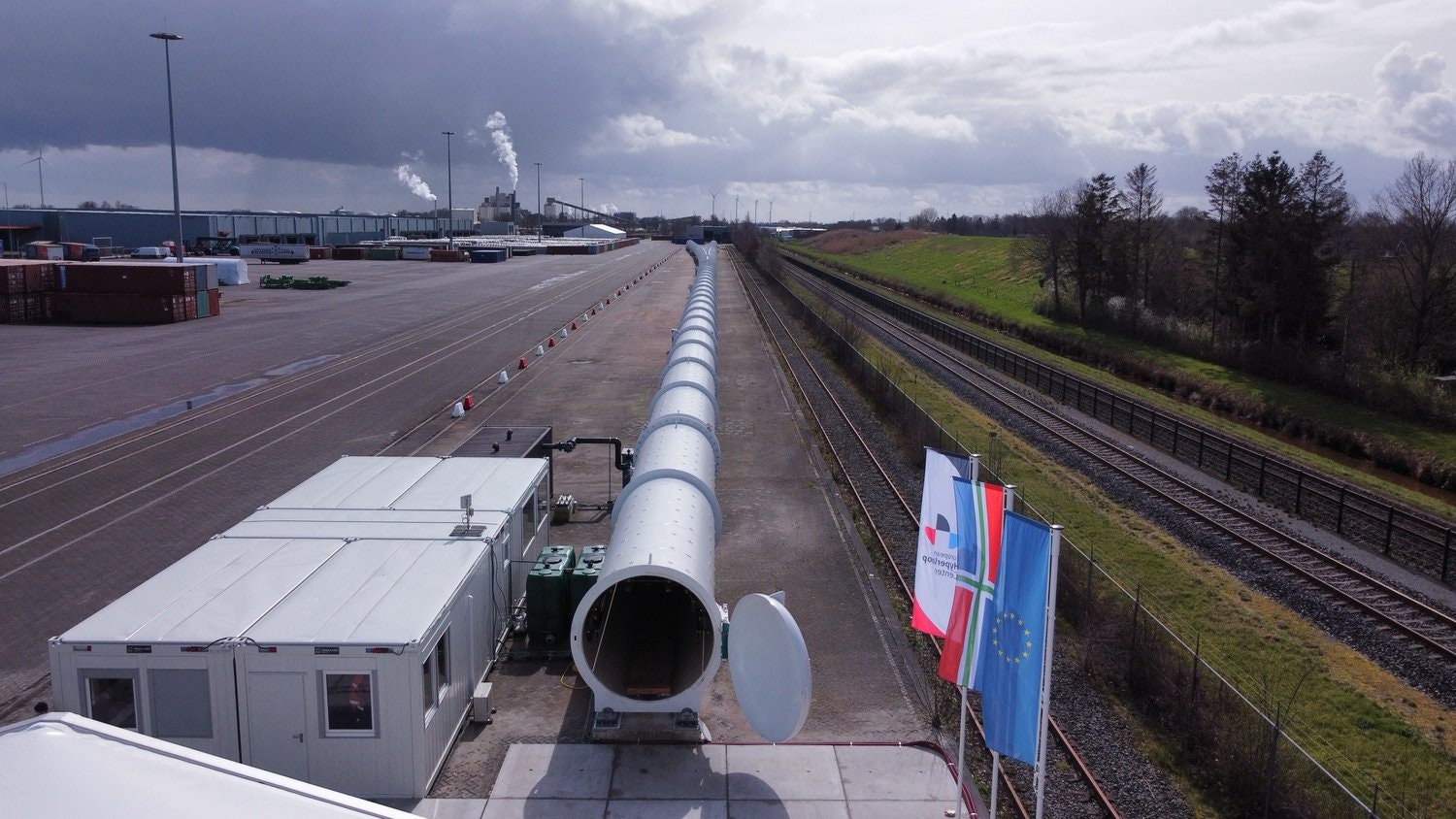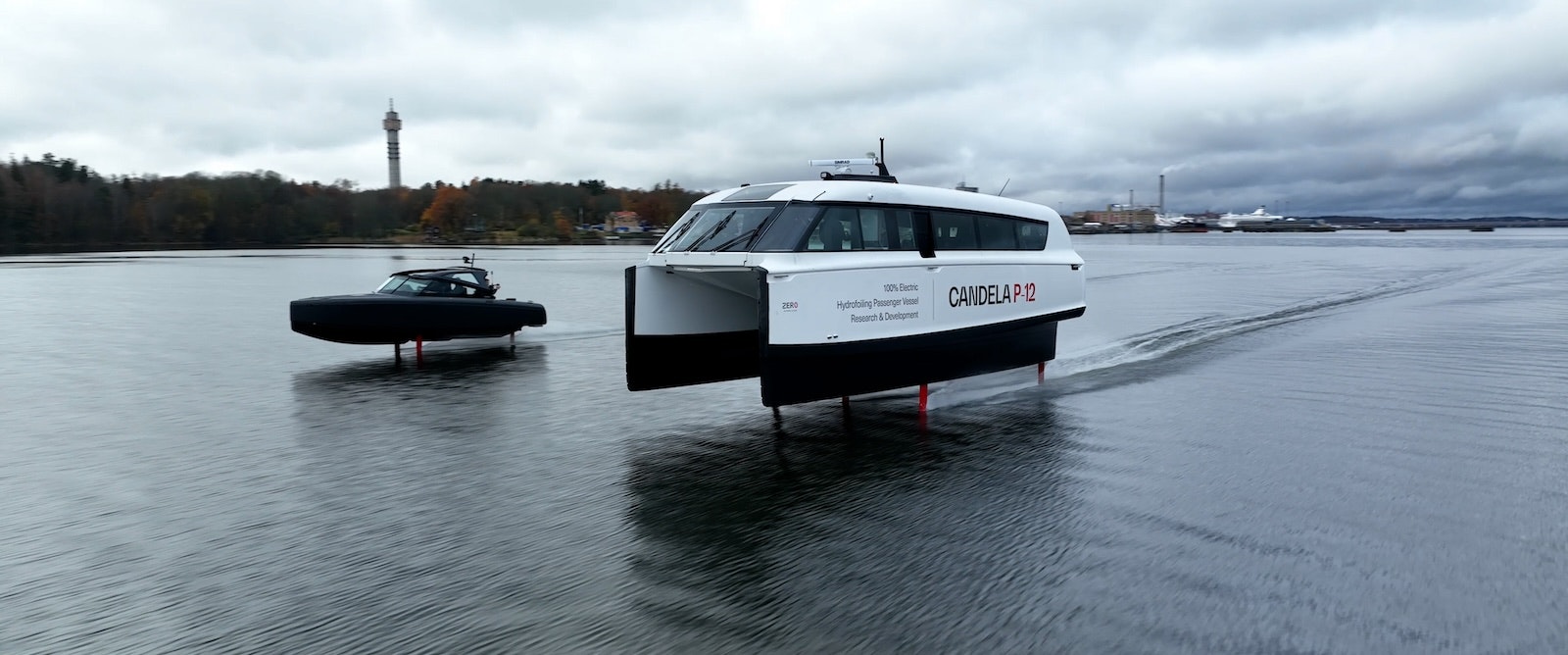When German startup Vay launched in 2018, it had the dream of creating cars that could be controlled remotely with no one behind the wheel.
Five years later, Vay became the first company to put a car on the road in Europe for test rides without anyone physically sitting in the driver’s seat. But rolling out its driverless car service to real-life customers has proven difficult in its home continent, where there isn’t yet a clear or consistent regulatory framework in place for this technology.
That’s why Vay upped sticks to the US in June last year to get its driverless cars in circulation, with real-life customers seated in them.
The company chose Las Vegas as its base as it “was welcomed with open arms” by the local regulator, says Vay’s cofounder and CEO Thomas von der Ohe, and setting up its operations there proved to be speedy.
Within seven months of moving to the city, the company was able to launch a fully driverless commercial service around the University of Nevada, Las Vegas and the city's arts district.
“The regulatory environment is very favourable here,” says von der Ohe. “There’s no limitation when it comes to the number of vehicles we can have and on how we price the service and so forth, which is very different to what we see in Germany.”
Vay has 15 vehicles in its fleet in Nevada, whose number will continue to grow as it expands its service area across the US — a huge market lacking strong public transport networks where car ownership dominates.
Other European startups have moved to the US — or are at least considering it — in search of easier regulation and the generous subsidies handed out to deeptech and climate companies via the IRA.
Europe versus the US
Vay’s teledriving service is not to be confused with autonomous vehicles; it can be thought of as a mixture between ride hailing and car rental.
A user orders a “teledriven” electric car, which arrives at their pick up point with the help of a person that’s operating the car remotely. Then the user drives themselves to their destination where they return the car to the control of the teleoperator, who goes and parks it for them.
As well as delivering your car to you and parking it, it can also take the wheel while you’re on board to “drive you home after you’ve had two glasses to drink,” says von der Ohe.

The difficulty with rolling out this service in Europe versus the US is that decision-making by regulators takes longer.
“It’s kind of a gradual rollout or a step-by-step approach here in Europe where we say, ‘let’s do this first, reevaluate, get all the stakeholders aligned, then define the next step, get feedback etc’ which is not always so easy,” says von der Ohe.
He uses the example that to roll out its service to customers in Hamburg, it requires the sign off of the interior department, the mobility senate, the police and other stakeholders who all have to agree and align on a framework for exactly how this service should run.
“So that slows us down a bit,” says von der Ohe.
In contrast, states like Nevada already permit teledriving under law, and other states are also open to the idea, says von der Ohe.
In San Francisco autonomous vehicles are already in circulation and are exempt from traffic tickets, though some providers have been under regulatory scrutiny following accidents.
There is a degree of willingness to bring in new tech in the US that we don’t yet have in Europe.
“There is a degree of willingness to bring in new tech in the US that we don’t yet have in Europe,” says von der Ohe. “We hope we can prove the value proposition that teledriving offers, which will hopefully speed up a launch in Germany and Europe more broadly.”
Discussions with German regulators have been productive in the last year, says von der Ohe, adding that he expects the first steps to be taken this year to create a regulatory framework for tele driving in Germany.
And while it’s faster and smoother to launch this kind of service in the US, Vay isn’t giving up on the European market — it’s “quite the opposite”, says von der Ohe.
The company still has an office in Berlin, which remains its headquarters, where 83 of its approximately 150 employees are based. And some of its team members who have been living in Silicon Valley for the last five years are moving back to Europe to help grow the company on the continent.
Challenges of moving to the US
Moving to the US also hasn’t been smooth sailing.
Vay had to move its electric vehicles and other equipment over to the US — a pretty big logistical feat.
Sourcing components for its teledriving hardware which it builds on top of the vehicles, and figuring out local supply chains in the US have also been major challenges.
The time difference of nine hours between Germany and the US is difficult for communication and keeping all team members “on the same page”, says von der Ohe — especially for a fast-growing startup where things are changing by the minute.
Von der Ohe’s work day in Las Vegas, where he’s based, starts at 4:30 or 5am to have his first call with the team in Germany, to “have as much overlap as possible.”
But while von der Ohe might be lacking in sleep, it’s a necessary evil to continue scaling up Vay’s teledriving service across the US, which he believes is the beginning of a “whole new mobility market segment.”
“2024 is about the commercialisation of this technology, not just for our service, but for other industries and use cases too,” he says.
For example, teledriving could be embedded in vehicles such as trucks and vans to ease the problem of driver shortages and reduce labour costs. And in the future, automakers could also embed teledriving capabilities into their own vehicles, adds von der Ohe.


